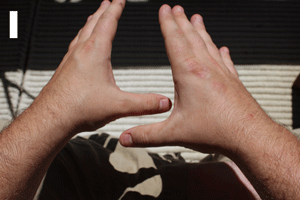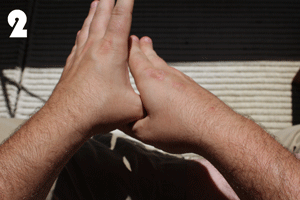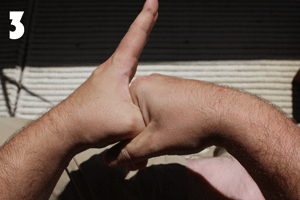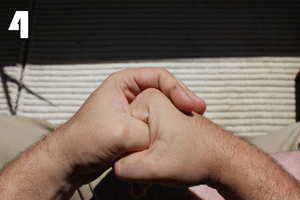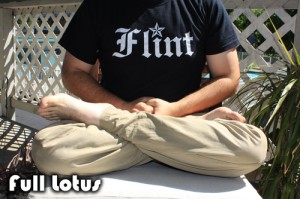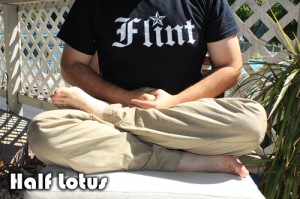Hand, Legs and Body Posture
Hand Posture
For the hands, place them into what’s called the Diamond Mudra hand posture shown above. You form this hand posture by taking the right hand and grabbing the thumb of the left hand. The four fingers of the right hand are wrapped around both thumbs of each hand, and then the four free fingers of the left hand just falls over top of the knuckles of the right hand. Once you get the hand posture correct, place your hands near the bottom of the abdomen.
Leg Positions
There’s several ways to position your legs and the above is listed by preference from left to right. First is the full-lotus position, this is the most preferred method of sitting for meditation since it provides a posture that makes it easy to naturally stabilize your back. This position is accomplished by placing both of your legs on top of each other, where each foot is on top of the opposite thigh. This is not usually easy to do if you’re legs are not currently flexible. If this is the case, and you are unable to flex your legs in this manner, see if you can try placing your legs in what’s called the half-lotus position, this is the second most preferred method of sitting. For half-lotus, only one leg is on top of the other as one foot is lying over top of the opposite thigh. If neither of these positions work, feel free to sit in a standard cross-legged position, where both feet are under each opposite leg and feel free to use a small pillow to stabilize your back in this position if necessary. At times your legs may become sore or even numb when maintaining such a position for certain durations. This is actually normal – when this happens, observe the pain or the numbness and if you can continue meditation with it, I advise to continue doing so. However, if it becomes too distracting, feel free to re-position your legs as necessary. The more you practice with your legs in these positions the less pain you’ll feel over time.

